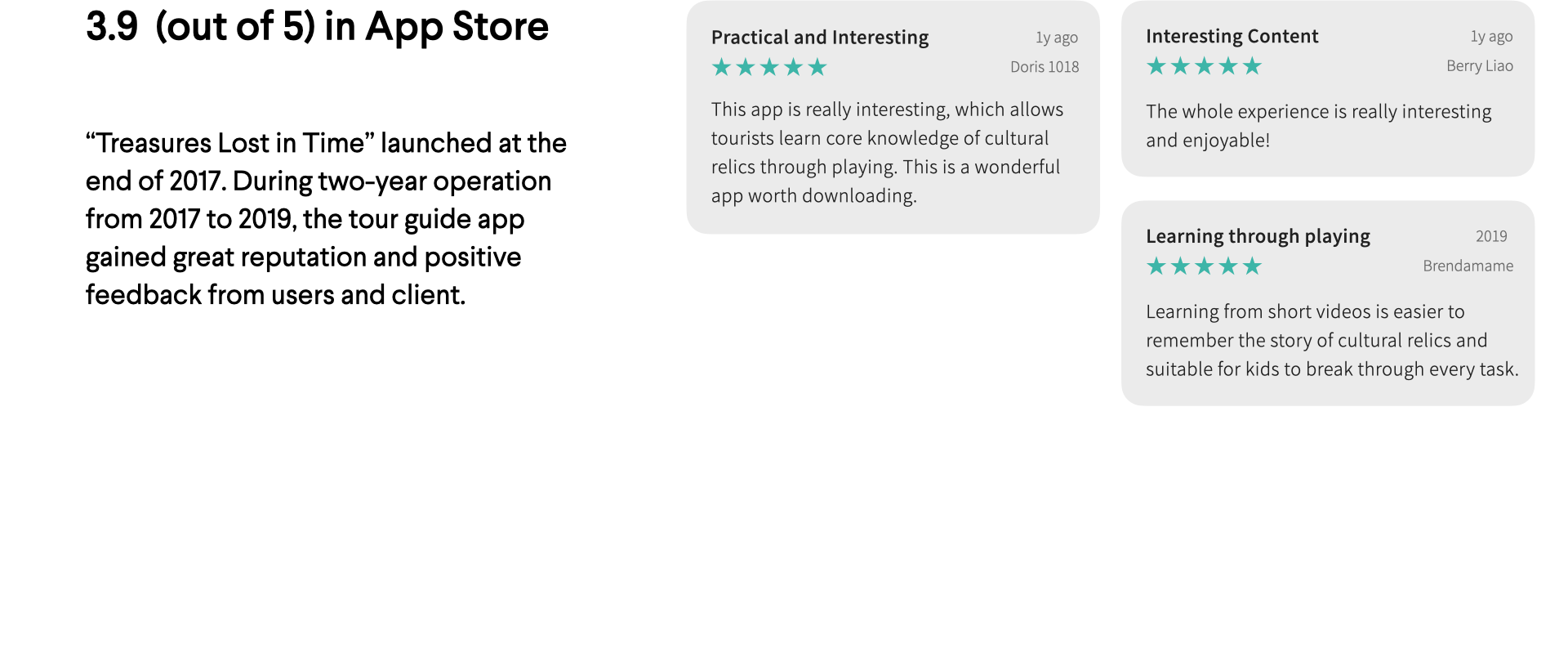National Palace Museum - Game Tour Guide
A technology-augmented visiting experience for family groups to improve their connection to the exhibition
About
Treasures Lost in Time is an immersive treasure hunt game designed for family groups to explore the NPM (National Palace Museum). The game aims to increase emotional connections between parents, children, and historical relics by providing a fun and interactive experience. The game consists of 9 tasks featuring different animated characters, where each player listens to unique audio content, shares information, and observes cultural relics together.
Treasures Lost in Time is an immersive treasure hunt game designed for family groups to explore the NPM (National Palace Museum). The game aims to increase emotional connections between parents, children, and historical relics by providing a fun and interactive experience. The game consists of 9 tasks featuring different animated characters, where each player listens to unique audio content, shares information, and observes cultural relics together.
Tool
Sketch
Figma
Slack
Keynote
Sketch
Figma
Slack
Keynote
Duration
18 Weeks
18 Weeks
My Role
Field Research, UX Strategy, Wireframing, Storyboard, Client Communication, Product Management
Field Research, UX Strategy, Wireframing, Storyboard, Client Communication, Product Management
Define
Problem
1. Academic Content
The current tour guide content at the museum is too formal and academic, resulting in a disengaging experience for visitors, particularly children. Our design challenge is to create a more interactive and enjoyable experience that will captivate visitors of all ages.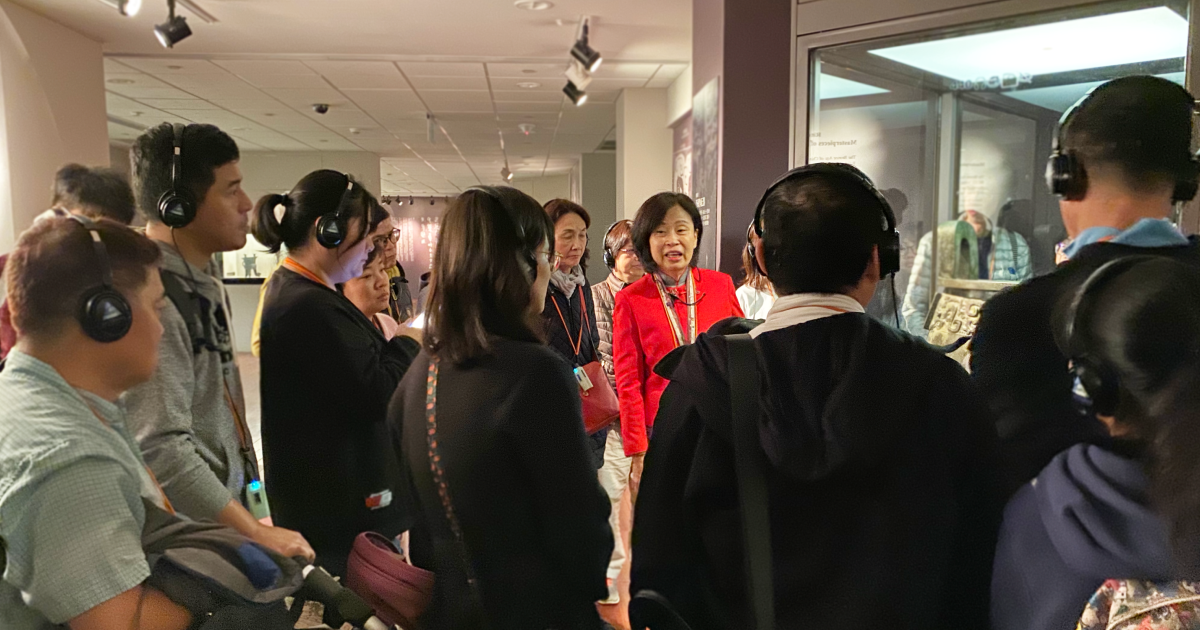
1. Disconnected Experience
The space design of the museum is creating a disconnect between visitors and the historical relics on display. The thick, cold glass that separates the visitors from the artifacts is hindering their ability to feel connected and engaged. Our design challenge is to find innovative ways to make the exhibits more accessible and immersive, allowing visitors, especially children, to feel more connected to the historical relics.
The Ask
How can we create a more immersive experience for family groups to play and learn in museums?
Ideation
Brainstorming
Co-creation workshop with parents
We co-created with parents who own children from 6 years old to 12 years old to collect different concepts. The most important aspects for parents to design an experience of “play through learning are interactive, simple, interesting, enjoyable, and immersive. Based on these five keywords, we came up with different products as references and designed five interactive games as the foundation of our approach."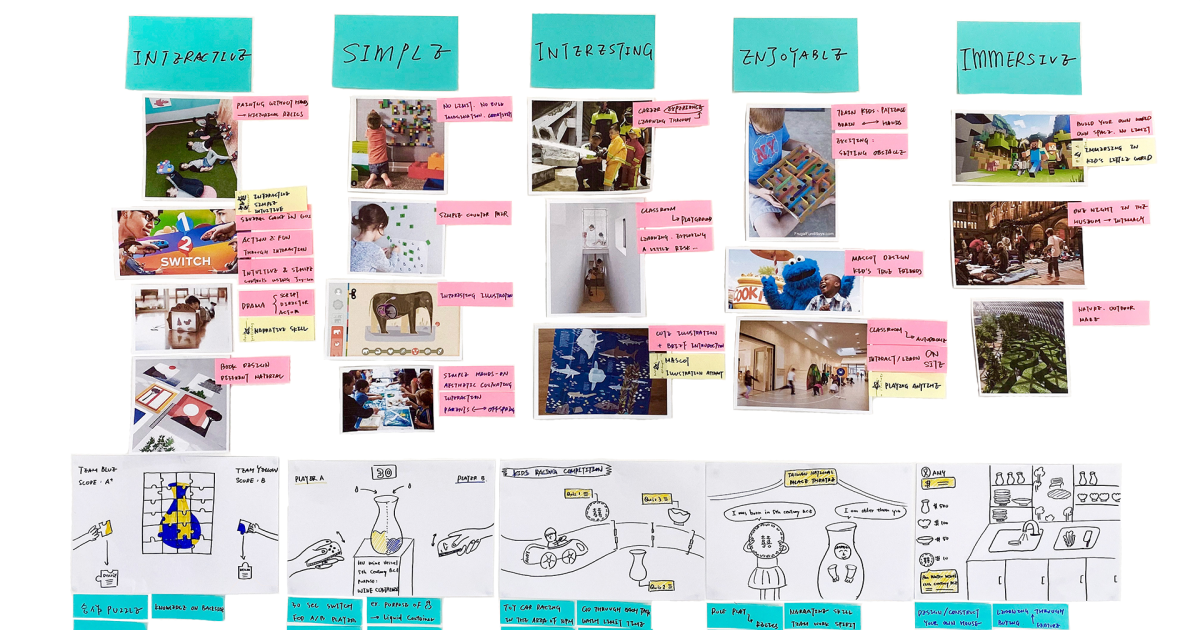
Design-by-Analogy
Car racing-inspired game for the circular museum experience
One of the interesting ideas that emerged during our co-creation workshop was using car racing as an analogy to develop a concept that children could engage with by completing tasks in a circular path throughout the museum. Using this idea, we developed a game that encourages children to complete tasks while moving through the exhibits in a circular pattern, simulating the experience of racing around a track.
![]()
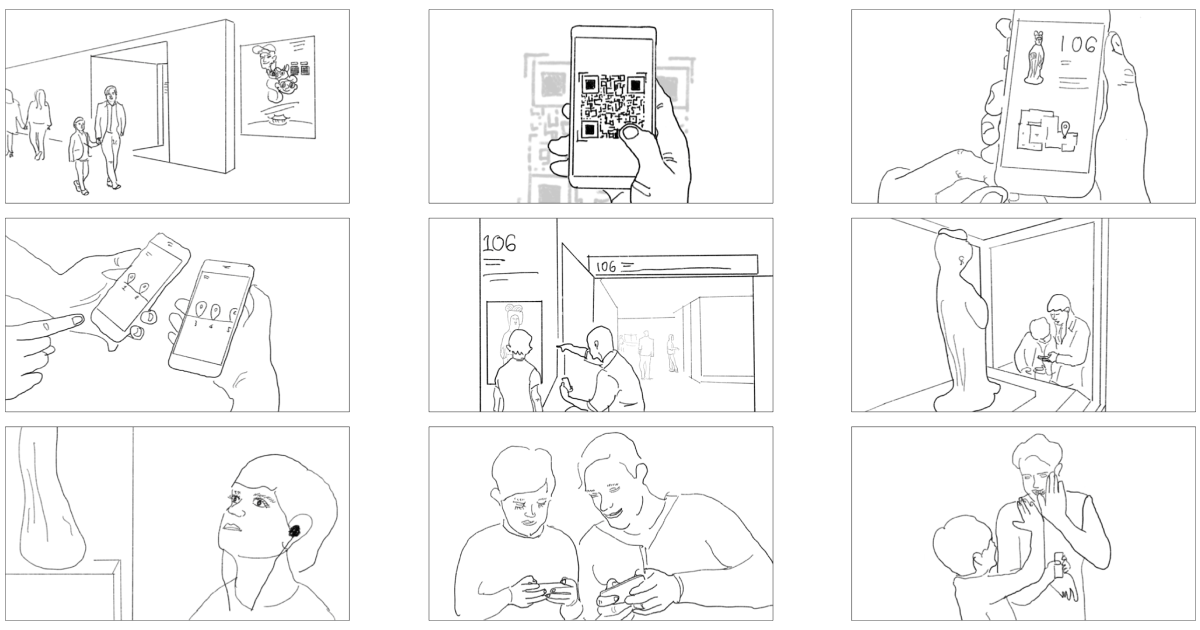
Wireframing
Exchange audio for interactive learning
To promote parent-child interaction, we implemented information exchange as a key feature. Players A and B listen to separate audio tracks and complete a quiz, requiring them to exchange information to solve the questions. This design approach enhances collaboration and encourages communication between players.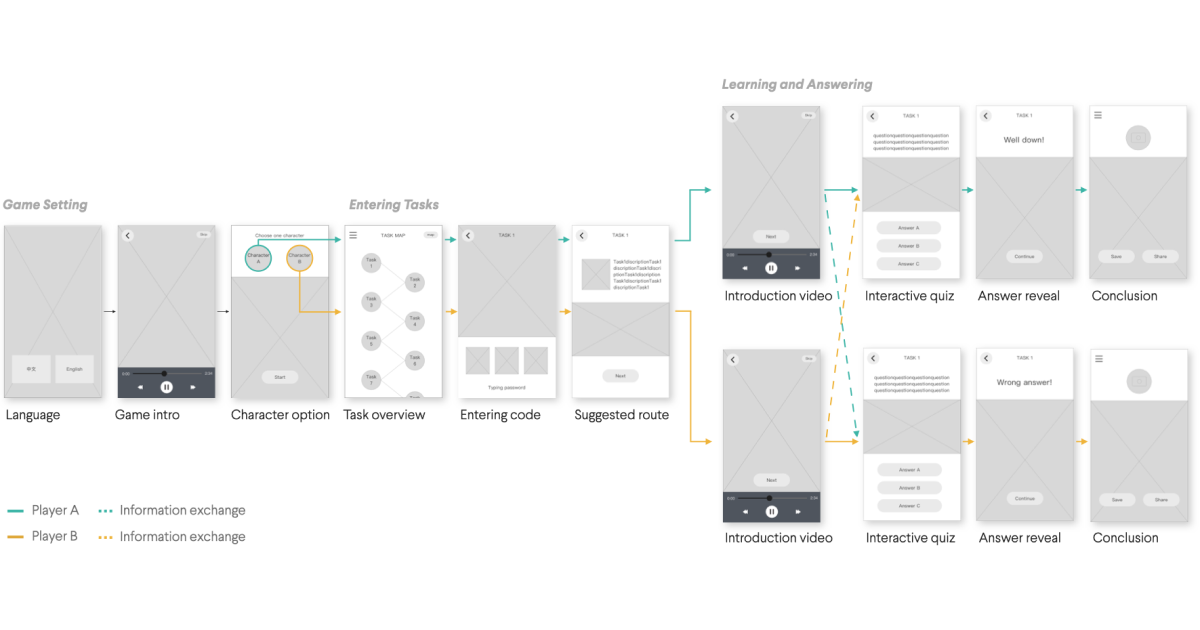
What if
What if
we could increase parent-child interaction and communication in an engaging and educational experience?
Design
Key Features
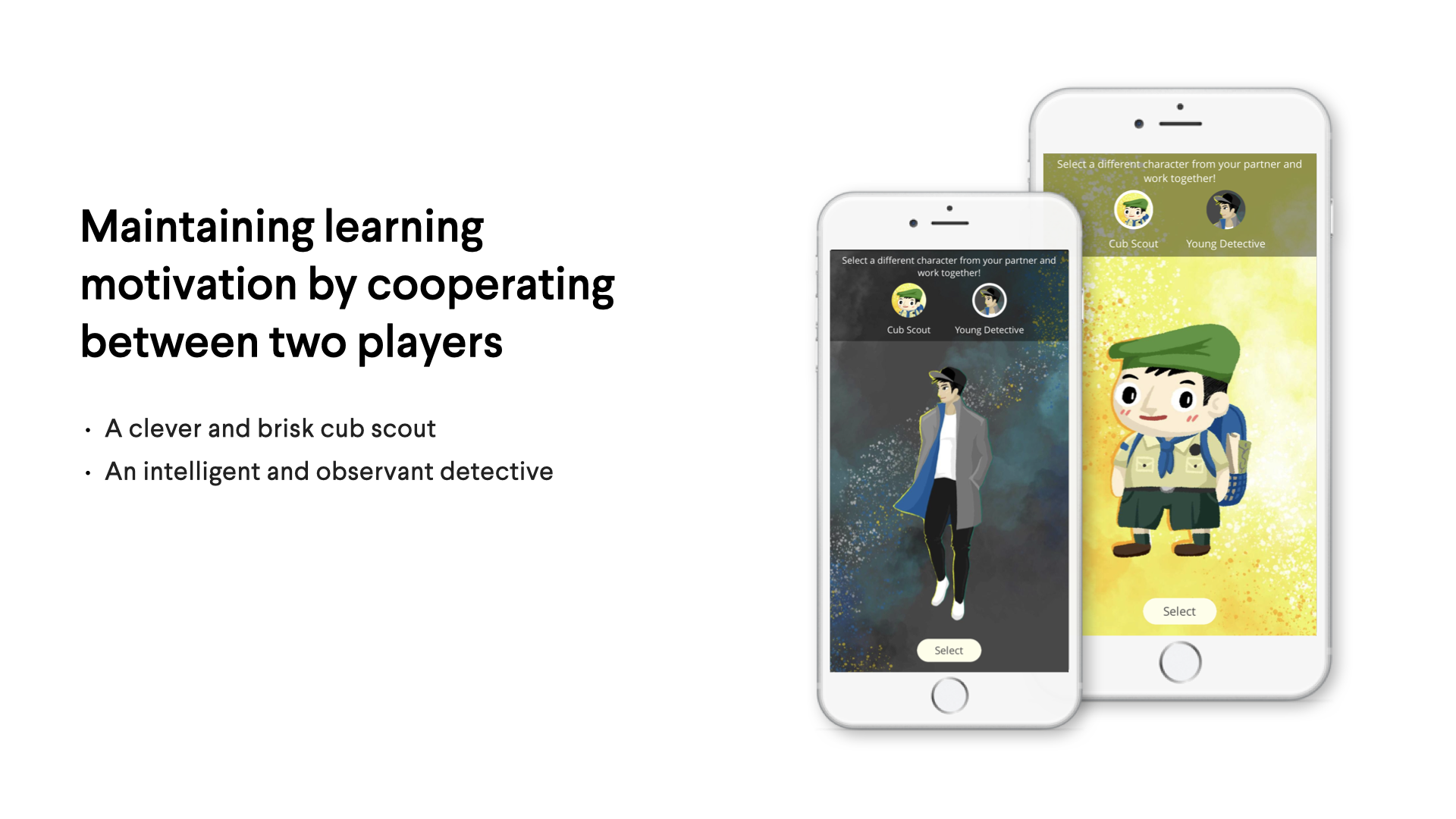
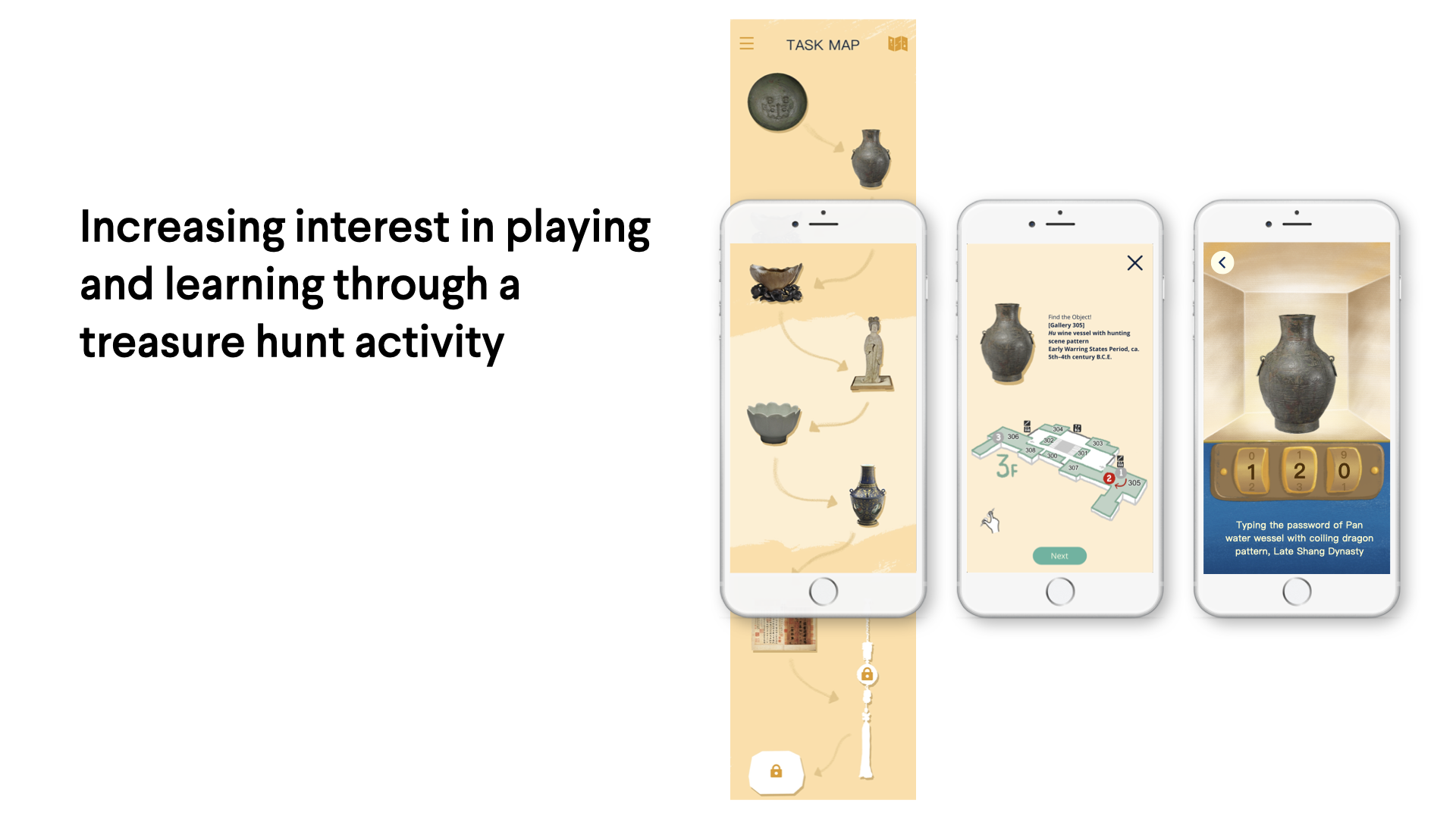


Outcome


